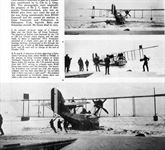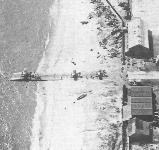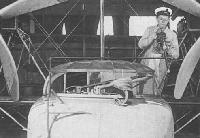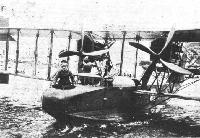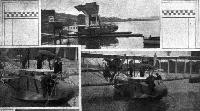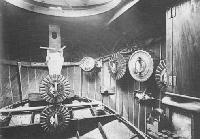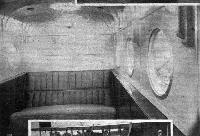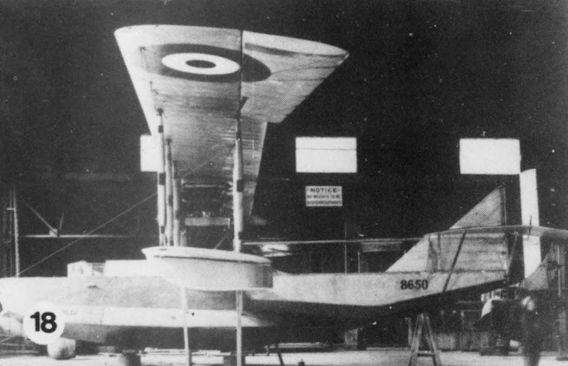
Описание
Страна : Великобритания
Год : 1917
Летающая лодка
Четырехместная разведывательно-патрульная летающая лодка
Варианты
- Curtiss - H America - 1914 - США
- Curtiss - H.12 / H.16 Large America - 1917 - США
- Curtiss - HS - 1917 - США
- Felixstowe - F.2 - F.5 - 1917 - Великобритания
- Aeromarine - Aeromarine 75 - 1919 - США
- Naval Aircraft Factory - PN - 1922 - США
- Hiro - H1H - 1923 - Япония
- Short - S.2 - 1925 - Великобритания
- Hall - PH - 1929 - США
- Keystone - PK - 1930 - США
Felixstowe F.1 и F.2
Сквадрон-лидер британской морской авиации Джон Порте впервые заинтересовался авиацией в 1909 году, а в начале 1914 года присоединился в США к знаменитому Гленну Кертису, чтобы участвовать в проектировании трансатлантической летающей лодки. Вернувшись в Великобританию, он стал активно убеждать Адмиралтейство приобрести для морской авиации летающие лодки конструкции Гленна Кертиса. В первый год Первой мировой войны Дж. Порте приобрел достаточно богатый опыт полетов на таких гидросамолетах, а в сентябре 1915 года приступил к разработке модифицированного варианта на базе лодок Кертиса.
Модернизация американских лодок имела ограниченный успех, но Порте, в конце концов, спроектировал совершенно новый корпус с одним реданом, который получил обозначение Porte I. Имея крылья и хвостовое оперение по типу стандартной летающей лодки Curtiss H-4 и силовую установку, состоявшую из двух двигателей Hispano-Suiza, новый гидросамолет получил обозначение Felixstowe F.1. После проведенных испытаний Порте добавил два редана на корпус лодки и в таком виде самолет считается прототипом последующего семейства летающих лодок "F".
Дальность полета и полезная нагрузка H-4 не удовлетворяли требованиям, предъявляемым к самолетам, предназначенным для патрулирования акватории Северного моря. Поэтому вскоре Порте убедил Гленна Кертиса присоединиться к проекту и усовершенствовать самолет, после чего тот под обозначением H-12 или Large America был в количестве 50 самолетов заказан Адмиралтейством. Машины были поставлены в Феликстоу в июле 1916 года. Однако установленные на них двигатели Curtiss мощностью 160 л.с. (119 кВт) имели слишком маленькую тягу, и Порте договорился об их замене двумя двигателями Rolls-Royce Eagle I мощностью 250 л. с. (186 кВт). После этого самолет получил обозначение H-12A. Хотя он имел хорошие летные характеристики, вскоре стало ясно - первоначальный вариант корпуса не подходит для использования в Северном море. Порте пришлось спроектировать новый двухреданный корпус - на основе корпуса самолета F.1, который вместе с перепроектированным хвостовым оперением, бипланной коробкой по типу самолета H-12 и двигателями Eagle обеспечил новой летающей лодке намного лучшие характеристики. Новый самолет получил обозначение Felixstowe F.2. Последовавшие испытания показали, что незначительная доработка и установка более мощных двигателей позволят сделать из самолета идеальную патрульную летающую лодку - с двигателями Eagle VIII машину начали выпускать серийно под обозначением F.2A.
Единственный вариант базовой модификации имел обозначение F.2C, машина отличалась модифицированным и более легким корпусом, первоначально она оснащалась двумя двигателями Eagle II мощностью 275 л. с. (205 кВт). Впоследствии они были заменены двумя двигателями Eagle VI мощностью по 322 л.с. (240 кВт), и хотя испытания показали, что в этой конфигурации летные характеристики самолета значительно превосходят характеристики самолета F.2A, в серию машина не пошла. Варианта F.2B не существовало.
ТАКТИКО-ТЕХНИЧЕСКИЕ ХАРАКТЕРИСТИКИ
Felixstowe F.2A
Тип: четырехместная патрульная летающая лодка
Силовая установка: два V-образных ПД Rolls-Royce Eagle VIII мощностью по 345 л. с. (257 кВт)
Летные характеристики: макс. скорость на уровне моря 153 км/ч; набор высоты 1980 м - за 16 мин 40 с; практический потолок 2925 м; продолжительность полета 6 часов
Масса: пустого 3424 кг; максимальная взлетная 4980 кг
Размеры: размах крыльев 29,15 м; длина 14,10 м; высота 5,33 м; площадь крыльев 105,26 м2
Вооружение: один или два 7,7-мм пулемета Lewis - наводимые, стреляющие вперед, устанавливались в носовой части, один или два 7,7-мм пулемета Lewis - наводимые, для обороны задней полусферы, в открытой надфюзеляжной установке, а также по одному наводимому 7,7-мм пулемету Lewis на каждом борту, плюс до 209 кг бомб на двух узлах подвески под нижним крылом (обычно две 104-кг бомбы)
Описание:
- Felixstowe F.1 и F.2
- Felixstowe F.3
- Felixstowe F.5
Фотографии
-
Мировая Авиация 128
Регистрационный номер: N4837 F.5 в британских ВВС состояли на вооружении 230-й эскадрильи, в конце 1922 года она была переформирована в 480-е звено, сохранив F.5 до расформирования в апреле 1923 года.
-
Aeroplane Monthly 1982-10 / J.Bruce - The Felixstowe flying boats (1)
Регистрационный номер: 8650 Felixstowe F.2. being the Porte II hull with the flight organs of the Curtiss H-8, was the original recipient of the serial number 8650.
-
Aeroplane Monthly 1982-10 / J.Bruce - The Felixstowe flying boats (1)
A Felixstowe F.2 with full-length top-decking on the hull and redesigned tail unit, on the slipway at Felixstowe.
-
Aeroplane Monthly 1982-11 / J.Bruce - The Felixstowe flying boats (2)
Регистрационный номер: 8677 A converted Curtiss H-12 with a Porte-type hull. 8677
-
Мировая Авиация 128
Были построены всего 100 самолетов F.2A, машины находились в эксплуатации до конца Первой мировой войны (1918 год). Обратите внимание на открытые кабины и крылья неравного размаха.
-
Мировая Авиация 128
Несмотря на худшие летные характеристики по сравнению с моделью F.2A, самолет F.3 обеспечивал экипажу больший комфорт в закрытой кабине.
-
Flight 1931-06 / Flight
WARTIME FLYING BOAT: THE TYPE F.3.
-
Air Pictorial 1968-11 / B.Robertson - But for the Armistice...
Ordered as Felixstowe F.2As in 1918, at Calshot were completed after the war hulls to F.5 standard
-
Aeroplane Monthly 1978-03 / Personal album
Регистрационный номер: N4305, N4308 A sequence of shots depicting a Felixstowe F.2A flying boat, either N4305 or N4308, in the process of being winched ashore at Great Yarmouth. Powered by a pair of 360 h.p. Rolls-Royce Eagle VIII engines, the F.2A entered service from late 1917, serving at virtually every RNAS flying boat station until the Armistice. The beaching procedure was carried out with the engines stopped, and has been described as “no enviable task if there was even a light swell”. The problem was compounded at Yarmouth, where there was often a 6kt cross tide over the slipway.
-
Aeroplane Monthly 1986-01 / Personal album
Aerial view of RNAS Great Yarmouth.
-
Aeroplane Monthly 1986-01 / Personal album
A trio of Felixstowe F.2s being towed on lighters off Great Yarmouth.
-
Aeroplane Monthly 1978-03 / Personal album
A Felixstowe F.2A on its beaching trolley at Great Yarmouth or Felixstowe, with one of its two 230lb anti-submarine bombs visible beneath the port wing. These bombs were basically of the depth-charge type, comprising a light case containing a heavy explosive charge detonated under water.
-
Aeroplane Monthly 1986-01 / Personal album
A close-up of the armourer working on an F.2A Lewis gun.
-
Air Enthusiast 1994-12 / P.London - Island Pioneers
Регистрационный номер: N4453 Production of Felixstowe F.2A flying-boats under way by S E Saunders, summer 1918.
-
Aeroplane Monthly 1982-11 / J.Bruce - The Felixstowe flying boats (2)
Регистрационный номер: N4510 [2] Felixstowe F.2A N4510 at the Isle of Grain on February 15, 1918.
-
Aeroplane Monthly 1982-11 / J.Bruce - The Felixstowe flying boats (2)
Регистрационный номер: N4566 Felixstowe F.2A N4566 with open cockpits and horn-balanced ailerons. This version has sometimes been referred to as the F.2B.
-
Aeroplane Monthly 1982-11 / J.Bruce - The Felixstowe flying boats (2)
Регистрационный номер: N65 The F.2C, later numbered N65.
-
Aeroplane Monthly 1982-11 / J.Bruce - The Felixstowe flying boats (2)
Регистрационный номер: N4259 Felixstowe F.3 N4259 which was built by Dick, Kerr & Co.
-
Flight 1920-07 / Flight
The Aircraft Disposal Company's Exhibit at the Aero Show, Olympia: Showing a few fittings and the F 3 flying-boat.
-
Aeroplane Monthly 1982-11 / J.Bruce - The Felixstowe flying boats (2)
Регистрационный номер: N90 [2] The original Felixstowe F.5, N90, being manhandled at the Isle of Grain.
-
Flight 1923-07 / Flight
Регистрационный номер: N90 [2] One of the three F.5 flying boats, fitted with Rolls-Royce "Eagle" engines, representing the British Air Ministry at the Gothenburg International Aero Exhibition. These craft will be flown over to Gothenburg, and will give flying demonstrations on behalf of Great Britain during the Exhibition.
-
Air Enthusiast 1994-12 / P.London - Island Pioneers
Регистрационный номер: N178 Felixstowe F.5 N178 was fitted with an experimental hollow-bottomed hull in an effort to improve water performance.
-
Flight 1931-06 / Flight
WARTIME FLYING BOAT: THE TYPE F.5.
-
Aeroplane Monthly 1982-11 / J.Bruce - The Felixstowe flying boats (2)
Регистрационный номер: N4637 [2] The production F.5 N4637. This flying boat was built by the Gosport Aviation Co., to which John Porte went as chief designer.
-
Flight 1924-10 / Flight
DIGNITY AND IMPUDENCE; or, the long and the "Short" of it; A study in contrasts. The small twin-engined Short light flying boat under the wing of an F.5; the smaller machine is to be tested this week.
Другие самолёты на фотографии: Short Stellite / Cockle / S.1 - Великобритания - 1924
-
Flight 1926-03 / Flight
Регистрационный номер: G-EAQT [2] CONVERTED F5 FLYING BOAT: A couple of years ago Short Brothers built this machine for Mr. Lebbeus Hordern of Australia for his private use, and the machine has'done good service as an aerial yacht. Mr. Hordern has now ordered the small all-metal flying boat.
-
Flight 1921-05 / Flight
Lisbon to Madeira in a flying-boat: As announced in FLIGHT some time ago, a fine flight of 540 miles was made by Portuguese Naval Air Service officers between these two places. Our photograph shows the machine, a British-built F.3, in which the flight was made. The engines are, of course, Rolls-Royce "Eagles." The machine was taken over by the Portuguese Government in May of last year, when it was flown from Calshot to Lisbon, crossing the Bay of Biscay.
-
Aviation Historian 40 / J.Kightly, R.Reis - The power of three
Регистрационный номер: N4018 Marinha Portuguesa Felixstowe F.3 flying-boat N4018 arrives at Funchal, Madeira, having flown from Lisbon, on March 22, 1921. This trial “raid” was undertaken by Coutinho (furthest left) and Cabral (standing, second from left) plus crew in order to test long-distance navigational techniques. Coutinho’s calculations proved remarkably accurate.
-
Flight 1924-04 / Flight
Регистрационный номер: G-EAQT [2] CONVERTED F5 FLYING BOAT: A couple of years ago Short Brothers built this machine for Mr. Lebbeus Hordern of Australia for his private use, and the machine has'done good service as an aerial yacht. Mr. Hordern has now ordered the small all-metal flying boat. In the top photograph may be seen the pontoons used by Shorts in getting into and out of their seaplanes, loading up with fuel, etc. The flying boat is brought between the pontoons, and hull as well as engines can be easily reached.
-
Aeroplane Monthly 1982-11 / J.Bruce - The Felixstowe flying boats (2)
A Felixstowe F.3 hull under construction in Boulton and Paul's Norwich works.
-
Aeroplane Monthly 1982-11 / J.Bruce - The Felixstowe flying boats (2)
Photograph of the interior of the aft portion of an F.3 hull built by Dick, Kerr & Co., Ltd., of Preston.
-
Aeroplane Monthly 1982-11 / J.Bruce - The Felixstowe flying boats (2)
Регистрационный номер: N4510 [2] The flight deck of F.2A N4510
-
Aeroplane Monthly 1986-01 / Personal album
Interior of Felixstowe F.2A nose, showing spare Lewis ammunition drums, Very pistol and cartridges, possibly the bomb release lever (starboard side) and associated control runs, and crew intercom. The nose Lewis gun mounting is at the top of the picture.
-
Flight 1924-04 / Flight
CONVERTED F5 FLYING BOAT: A couple of years ago Short Brothers built this machine for Mr. Lebbeus Hordern of Australia for his private use, and the machine has'done good service as an aerial yacht. Mr. Hordern has now ordered the small all-metal flying boat. The view shows a portion of the roomy cabin.
-
Aeroplane Monthly 1982-11 / J.Bruce - The Felixstowe flying boats (2)
The hull of the wrecked F.2C beached at Grain, March 14, 1918.
- Фотографии










